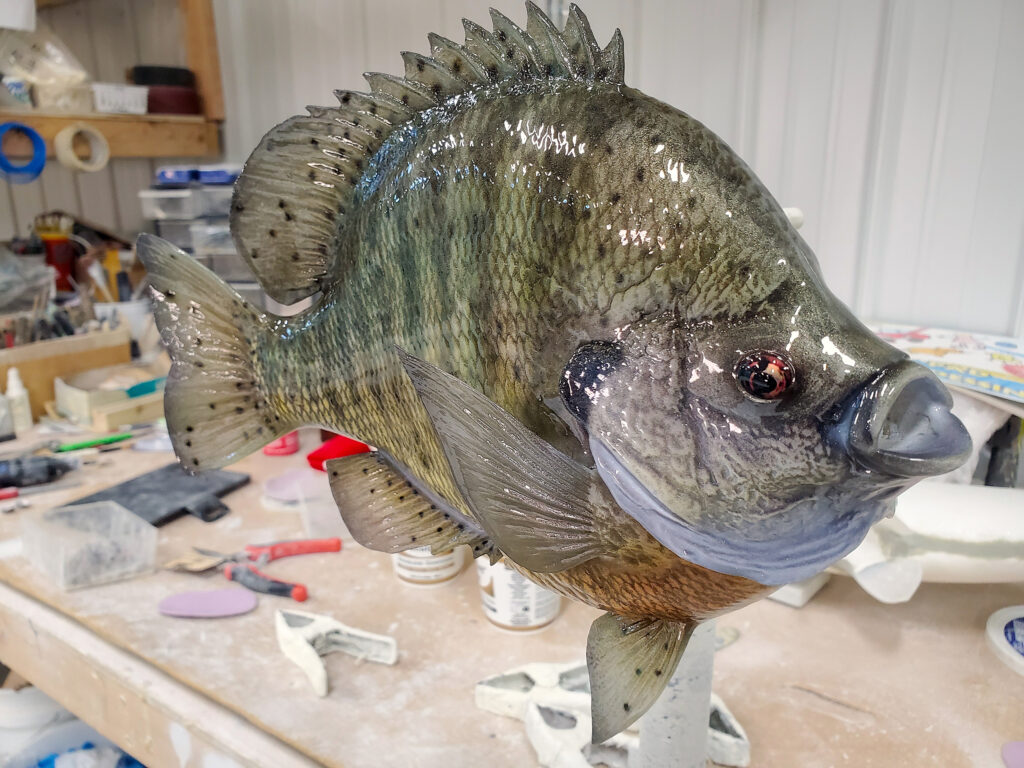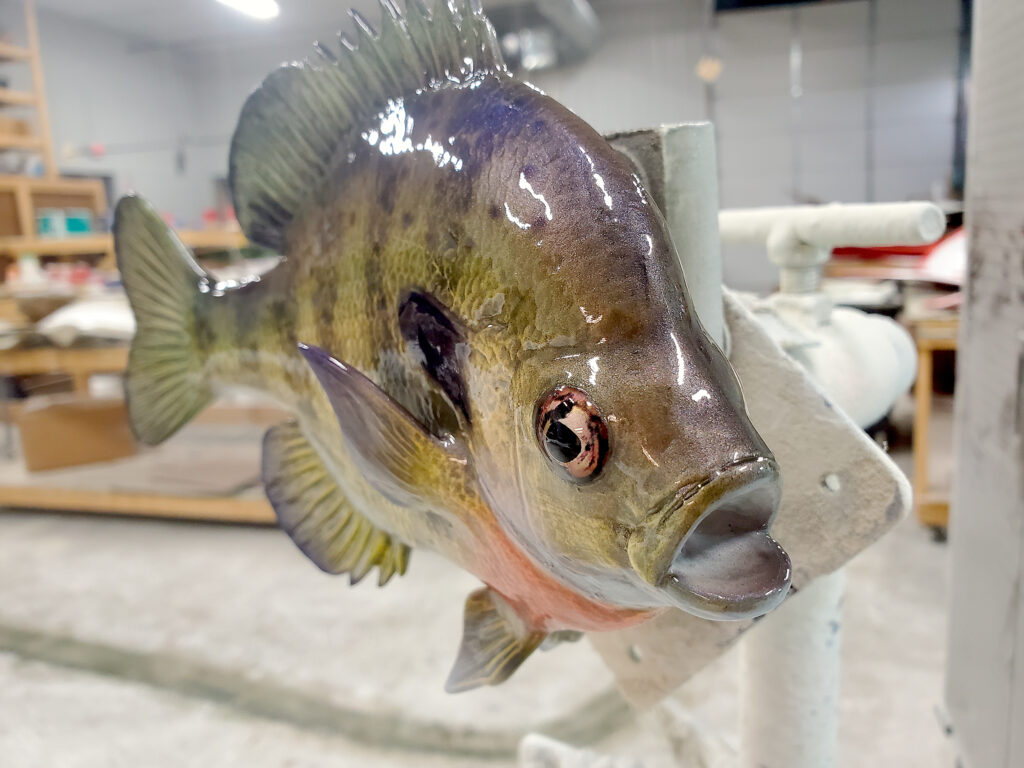BLUEGILL
Lepomis macrochirus
The bluegill is a freshwater fish also known as a “bream”, “brim”, “sunny”, or “copper nose” or “perch”. It is a member of the sunfish family Centrarchidae of the order Perciformes. It is native to North America and lives in streams, rivers, lakes, and ponds. It usually hides around and inside old tree stumps and other underwater structures. It can live in either deep or very shallow water, and will often move from one to the other depending on the time of day or season. Bluegills also like to find shelter among aquatic plants and in the shade of trees along banks. Being able to hide is important since bluegills are prey for many freshwater predators such as bass, other (sunfish), northern pike, walleye, muskies, trout, herons, kingfishers, snapping turtles, and otters.
Their distinct deep blue and purple markings on their face are an easy way to identify these fish. The dark bands along the body and the bright orange and yellow bellies can vary depending on the body of water where they are caught and genes.
The fish are omnivores and will eat anything they can fit in their mouth. They mostly feed on small aquatic insects and fish.




